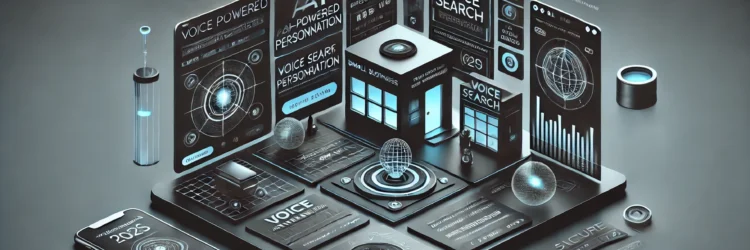
In the rapidly evolving digital landscape, small businesses must stay ahead of website design trends to remain competitive and engage customers effectively. As we step into 2025, several key design trends are shaping how businesses present themselves online. Here are the top website design trends small businesses should consider implementing to stay relevant and appealing.
Artificial intelligence (AI) is transforming how websites interact with users. In 2025, AI-driven content personalization will be a must-have. Small businesses can leverage AI to analyze visitor behavior and tailor website content, product recommendations, and chatbot interactions for a more customized experience.
With the growing use of smart speakers and voice assistants, optimizing websites for voice search is more critical than ever. Businesses must adopt natural language processing (NLP) strategies and ensure their websites are structured to provide clear, concise answers to voice queries.
Dark mode continues to be a popular design choice due to its modern look and reduced eye strain. Alongside dark mode, minimalist web design, characterized by clean layouts, ample white space, and easy navigation, is helping small businesses enhance user experience and site performance.
Interactive elements such as quizzes, calculators, and 3D visuals are making websites more engaging. Augmented Reality (AR) and Virtual Reality (VR) are also becoming more accessible for small businesses, allowing customers to virtually experience products before purchasing.
With mobile devices dominating web traffic, a mobile-first approach is essential. Small businesses should ensure their websites are fully responsive, with touch-friendly interfaces and fast-loading mobile pages to improve user retention and search engine rankings.
Sustainability is becoming a priority in digital experiences. Lightweight websites with optimized images and energy-efficient hosting contribute to a greener web. Small businesses can showcase their commitment to sustainability through eco-conscious design practices.
As cyber threats continue to evolve, website security is more important than ever. Implementing multi-factor authentication (MFA), secure payment gateways, and regular security updates helps small businesses protect customer data and build trust.
Subtle animations and motion UI elements can guide users’ attention and enhance the browsing experience. Well-placed micro-animations make navigation smoother and create a dynamic, engaging website.
Dynamic content that adapts to users in real-time is gaining popularity. AI-generated blogs, personalized landing pages, and real-time updates help small businesses maintain fresh, relevant content effortlessly.
The rise of no-code and low-code platforms enables small businesses to build and update websites without extensive technical expertise. These tools allow for greater customization and agility while keeping costs manageable.
In 2025, small businesses must embrace these web design trends to remain competitive. By prioritizing AI-powered personalization, voice search optimization, interactive experiences, and cybersecurity, businesses can create modern, user-friendly websites that drive engagement and conversions. Staying adaptable and incorporating these trends will help small businesses thrive in the digital landscape.
